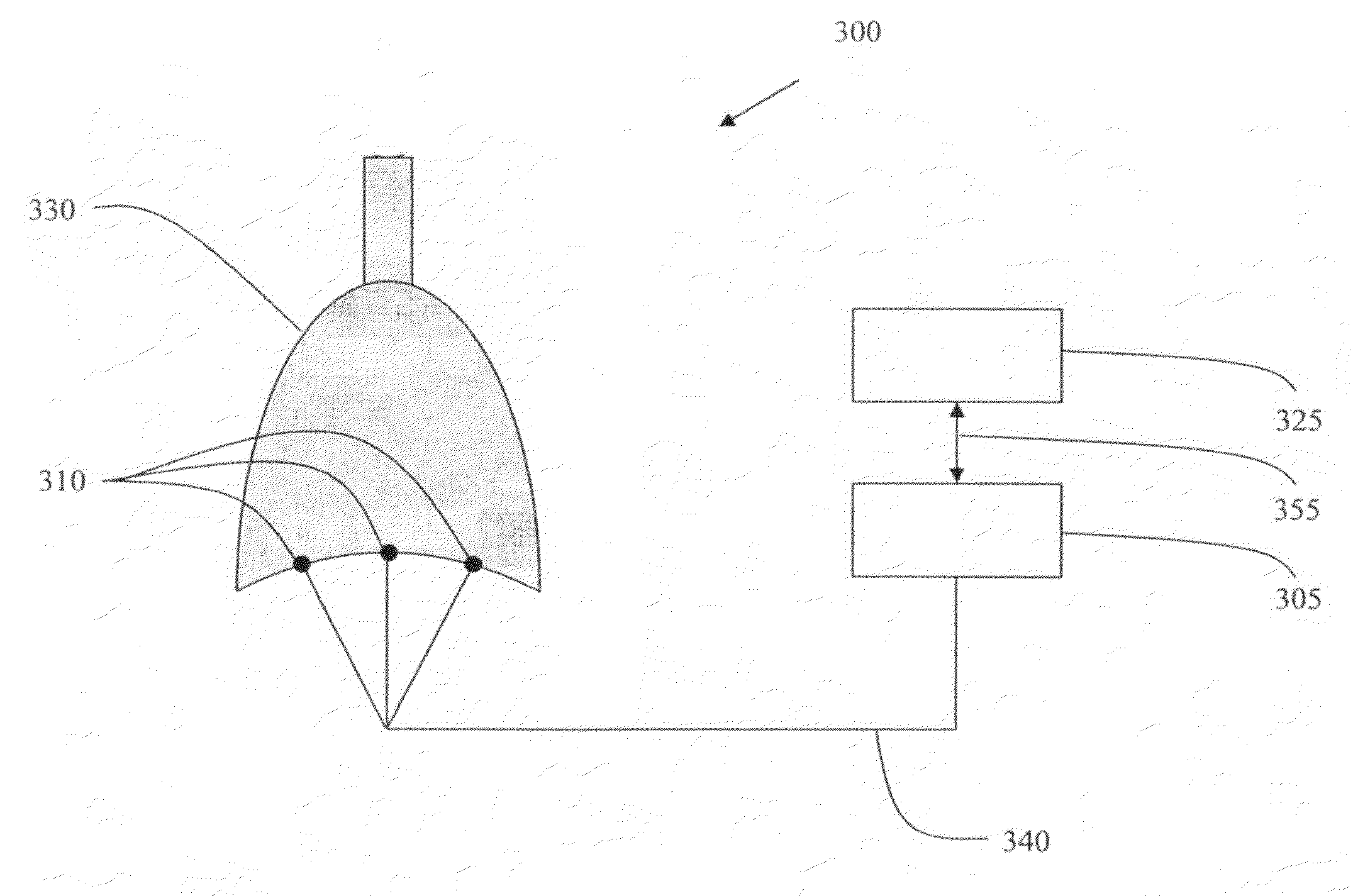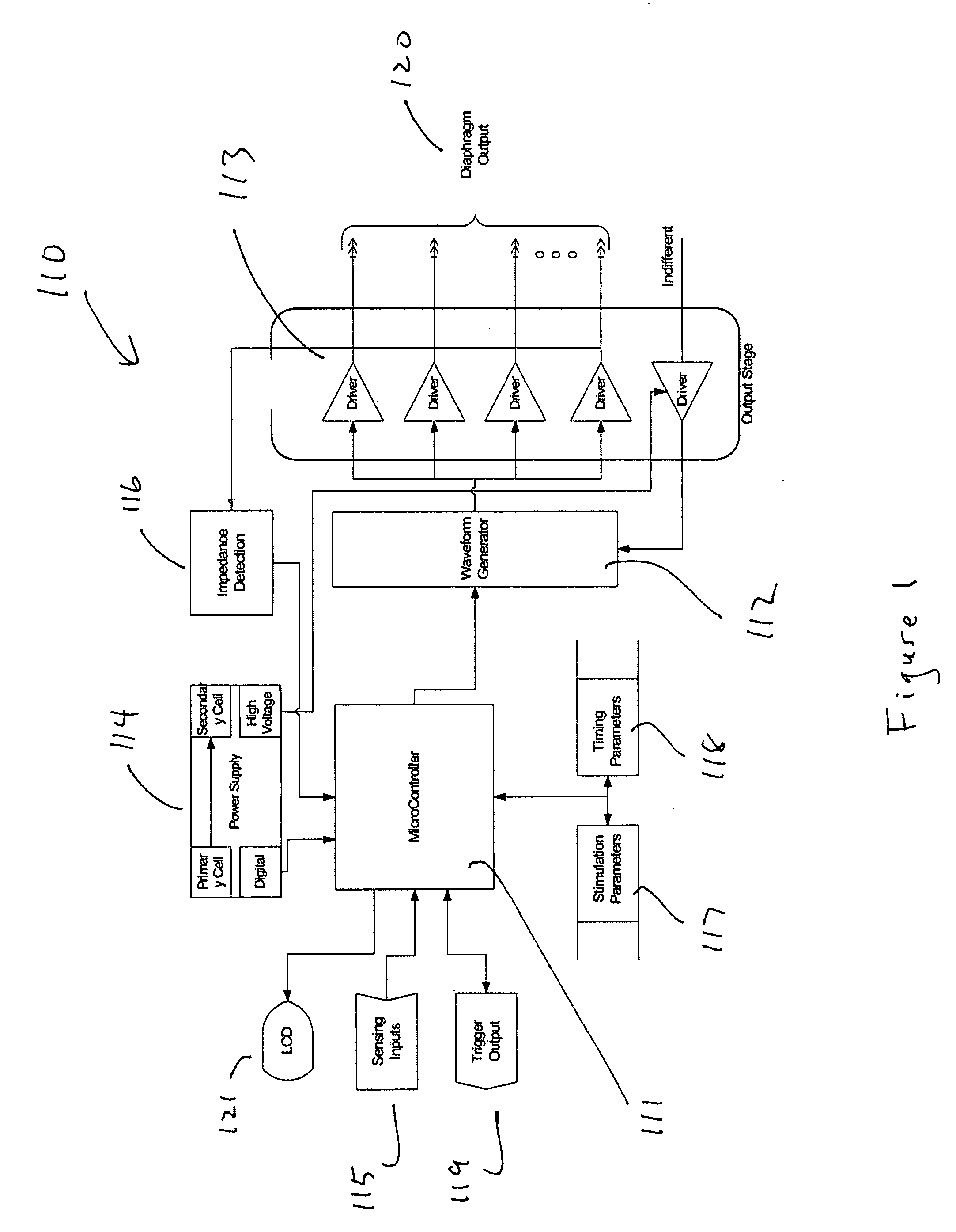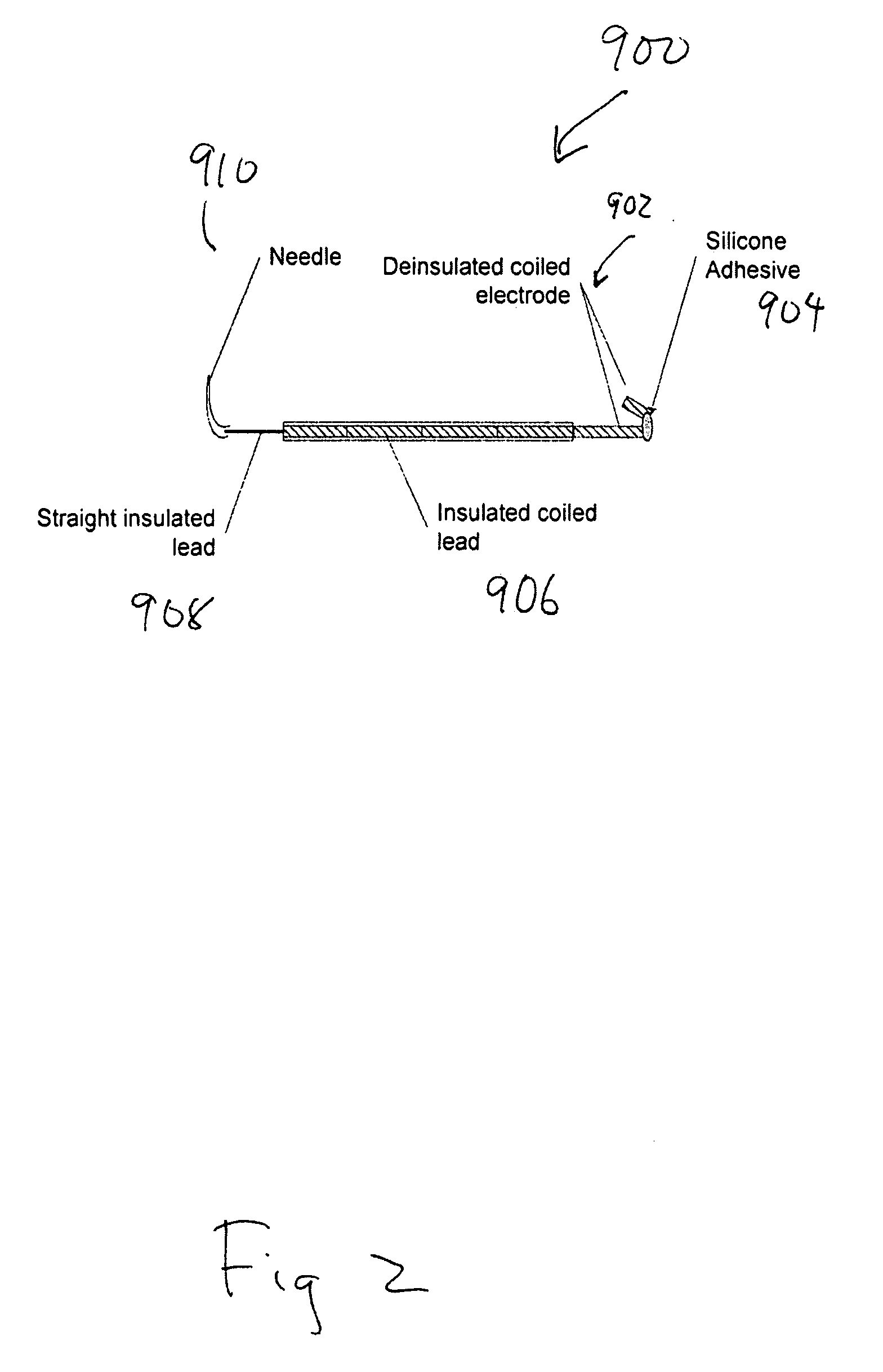Ventilatory assist system and methods to improve respiratory function
a technology of ventilator and assist system, which is applied in the field of ventilator assist system and methods for improving respiratory function, can solve the problems of compromising patient hemodynamics and long-term use of mechanical ventilator, and achieve the effects of improving respiratory compliance, reducing maximal lung pressure, and increasing tidal volum
- Summary
- Abstract
- Description
- Claims
- Application Information
AI Technical Summary
Benefits of technology
Problems solved by technology
Method used
Image
Examples
example 1
Interaction of Respiratory Support by Positive Pressure Ventilation and Negative Intrathoracic Pressure by Diaphragm Stimulation
[0086]FIGS. 13A-9D show screenshots of patient data collected from a study in which positive pressure ventilation and diaphragm stimulation were variously applied. FIG. 13A (bottom left) shows a normal airway pressure waveform with ventilator support only, without diaphragm stimulation. These data show the typical increase in airway pressure until the desired tidal volume (VT=0.52 liters) is achieved. A peak airway pressure (PPEAK) of 17 cm H2O and mean airway pressure (PM) of 5 cm H2O is reached under the ventilator only conditions. The minute ventilation of 4.2 liters / minute is displayed for the given VT and the measured respiratory rate (RR=8 breaths per minute) with is calculated as MV=VT*RR.
[0087]FIG. 9B (bottom right) shows airway pressure with diaphragm stimulation starting approximately 1 sec into inspiration, thus demonstrating ability to increase ...
example 2
Application of Diaphragm Pacing to Treatment of ALS Patients
[0091]Amyotrophic lateral sclerosis (ALS, Lou Gehrig's Disease) is a condition leading to fatal motor neuron degeneration. Muscular weakness typically progresses at the rate of 1.8% to 3.5% per month. When the muscle deterioration reaches the diaphragm, the patient develops hypercarbic respiratory failure, leading to death. ALS patients may experience different rates of decline in their left and right hemidiaphragms.
[0092]A mechanical ventilator (also known as positive pressure mechanical ventilator or PPMV) can be used to maintain breathing in ALS patients in an invasive (with tracheostomy) or non-invasive (with mask or nasal cannula) manner, but there are certain negative aspects to mechanical ventilation. In addition to the significant costs of ventilators, ventilated patients suffer from speech difficulty, further reduced mobility, and create a heightened burden on caregivers. More significant are the deleterious physio...
example 3
Respiratory Support for a Heavily Sedated ICU Patient
[0099]For a heavily sedated ICU patient with no respiratory drive a volume ventilator mode may be used to provide ventilatory needs. The diaphragm pacing may be used to assist in this case to (1) preferentially ventilate the dependent portions of the lungs to avoid atelectasis, (2) reduce the applied pressures, and (3) reduce the work of breathing by increasing the respiratory system compliance, as outlined below.[0100]1. To preferentially ventilate the dependent portions of the lungs the stimulation may be applied after the volume delivery commences (after the peak pressure but prior to completion of the positive gas flow) to draw the delivered air to the posterior lobes. With a heavily sedated patient higher stimulus parameters may be used, if needed, as any discomfort from the stimulus would not be felt by the patient.[0101]2. To reduce the applied pressures the stimulation may initiate coincidental to the ventilated breath to ...
PUM
 Login to View More
Login to View More Abstract
Description
Claims
Application Information
 Login to View More
Login to View More - R&D
- Intellectual Property
- Life Sciences
- Materials
- Tech Scout
- Unparalleled Data Quality
- Higher Quality Content
- 60% Fewer Hallucinations
Browse by: Latest US Patents, China's latest patents, Technical Efficacy Thesaurus, Application Domain, Technology Topic, Popular Technical Reports.
© 2025 PatSnap. All rights reserved.Legal|Privacy policy|Modern Slavery Act Transparency Statement|Sitemap|About US| Contact US: help@patsnap.com



